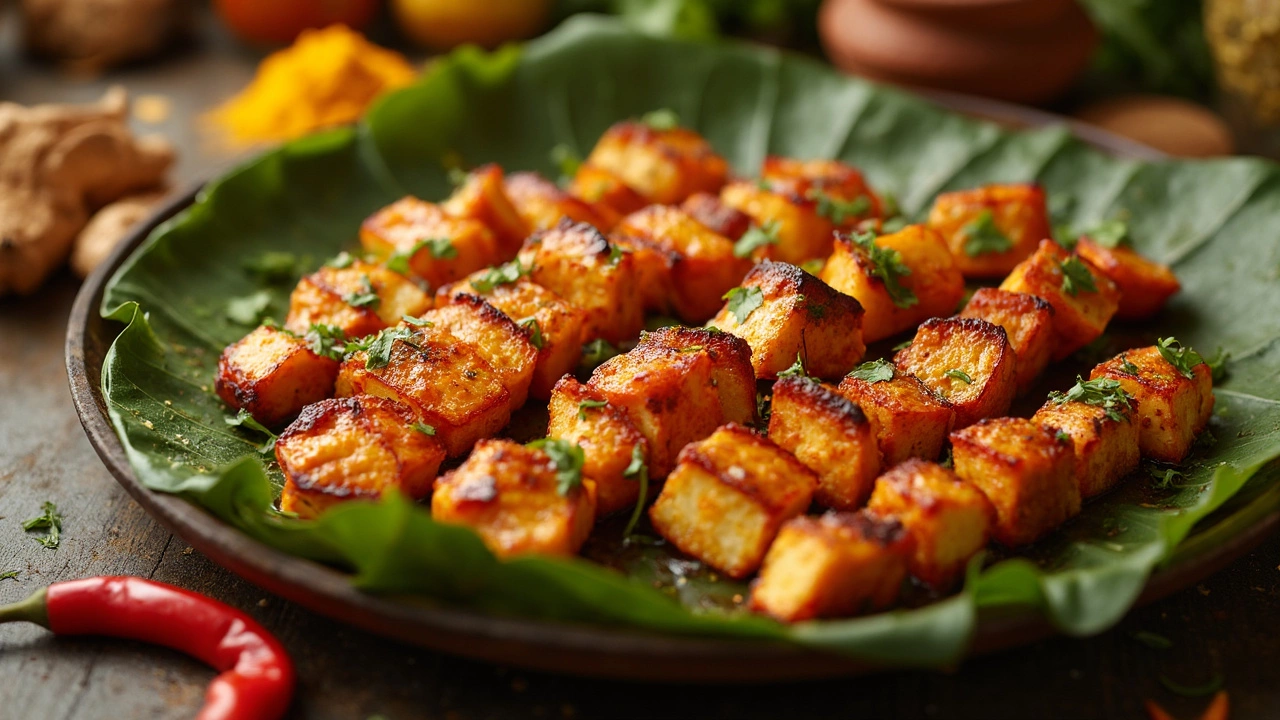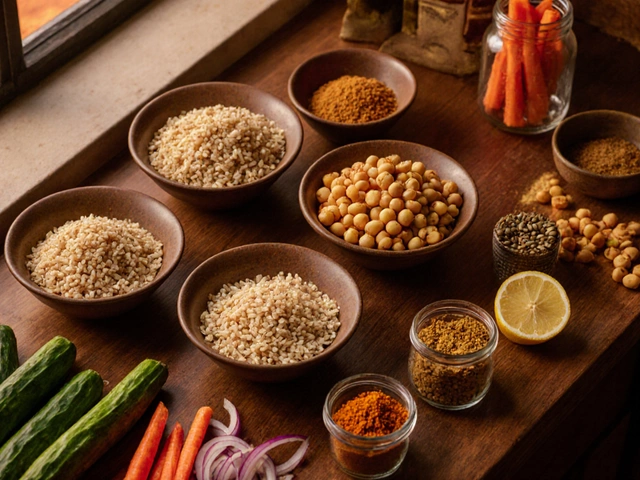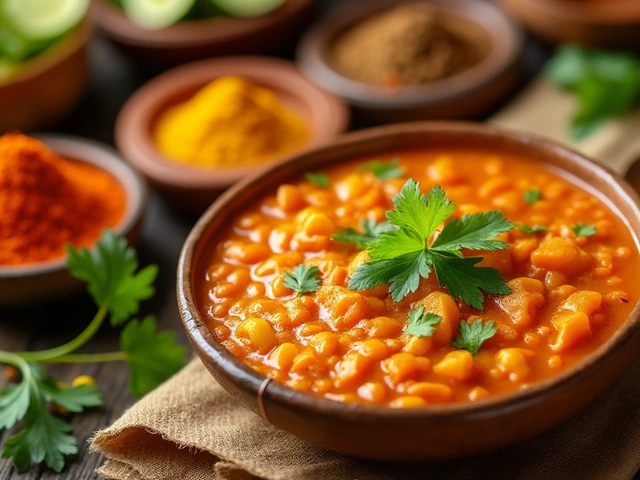Picture this. You’re craving juicy tandoori chicken at home. You have spices lined up—cumin, coriander, smoked paprika—maybe even some bright red Kashmiri chili powder. But you glance in the fridge, and there it is: no yogurt. Or maybe you can’t eat dairy. Suddenly, the rich, tangy marinade feels off-limits. Don’t panic. Swapping out yogurt in tandoori isn’t just possible—it can be delicious and enlightening.
Why Yogurt Matters in Tandoori (But Isn’t Always Required)
Let’s get honest about yogurt’s job in tandoori dishes. It’s not there just for creaminess—it’s actually science at play. Yogurt’s lactic acid gently breaks down meat fibers, helping chicken, fish, or paneer get more tender while soaking up the spices. It also smooths everything out, working as glue for the ginger, garlic, and masala.
But sometimes yogurt isn’t welcome at the party. Dairy allergies are behind a lot of swaps, but yogurt can also overpower if you prefer a zingier, lighter marinade. Or you might have just run out—it happens! Turns out, plenty of Indian cooks, especially in rural areas or in places where fridges are a luxury, get creative all the time. Fermentation, acidity, and balance come from many foods, not just yogurt.
The magic of tandoori is more about the blend of spices, heat, and smoky char than a strict set of rules. In fact, the tandoor oven and the spice coating mattered first—the creamy marinade joined the party much later.
Plant-Based and Dairy-Free Marinating: It’s Not as Hard as You Think
Let’s get real—vegan and dairy-free doesn’t mean bland or dry. The secret to a good marinade is an acidic base, a creamy binder, and enough flavor to go toe-to-toe with a smoky grill or oven. Yogurt just happens to check those boxes, but it’s hardly the only option.
The most convincing replacement? Coconut milk or coconut yogurt. Grab the thick, creamy part from a can of full-fat coconut milk, and whisk in lemon juice. You’ll have richness, tanginess, and enough body to hold your spices, just like with yogurt. Plus, it actually holds up beautifully to grill heat, crisping up without burning quickly. Coconut’s hint of sweetness pairs especially well with tandoori’s spices, but it’s subtle—you won’t taste coconut curry here.
If coconut isn’t your style, here are some more stand-ins that people swear by:
- Silken tofu makes a shockingly smooth and mild-tasting base. Just purée it with lemon juice and a pinch of salt till pourable. This works especially well if you’re after a totally neutral flavor—try it with tandoori mushrooms or paneer.
- Cashew cream is a favorite with vegan cooks for a reason. Soak raw cashews then blend with water, lemon juice, and maybe a splash of apple cider vinegar until you hit a smooth, thick, tangy consistency. It’s dreamy on cauliflower too.
- Plant-based yogurts—think unsweetened almond, soy, or oat—can do the job in a pinch. Pick the thickest texture you can find, so it clings beautifully to your protein. Aim for non-sweet and no ‘vanilla’ flavorings unless you find that appealing.
- Even plain tomato puree, if there’s nothing else, can work with a dash of vinegar or lemon. The flavor profile will be sharper and more acidic, but it’s better than nothing and soaks up smokiness well.
The key with any substitute is adjusting the acid. Yogurt is subtly sour, so swap in as much lemon juice or vinegar you’d use to mimic that tang—about 2 teaspoons per cup of your base is a decent starting point.

Getting Texture and Flavor Right: Pro Tips for Substitutes
Not all swaps are created equal, and a few easy tricks make a world of difference when you’re winging it with what’s in the pantry. Start by thinking like a taster: you want something thick so it glues the spices, plus enough acidity to break down protein fibers and amp up the flavors.
If your substitute feels runny (thin coconut milk, for example), whisk in a spoonful of chickpea flour or cornstarch. This thickens things up fast and gives you that classic crust as the marinade caramelizes in the oven or on the grill. Just be careful not to go overboard—too much thickener and you’ll get gummy, not creamy.
For more tang, try a mix of lemon juice and a splash of apple cider vinegar. Herbs like cilantro and mint blitzed into the marinade can keep things lively and bright, especially when you’re skipping the mild dairy tang. Don’t forget salt—marinades taste bland before cooking, so be generous, then taste again once it’s baked or grilled.
If you’re nervous about missing yogurt’s flavor, play around with a little nutritional yeast (for a cheesy undertone) or smoked paprika, which gives a rounder, umami note. You can experiment with black salt (kala namak) if you want an eggy twist with tofu, or a touch of chaat masala for a deeper punch.
The texture of the final cooked tandoori will be slightly different, sure, but you’ll still get those glorious burnt-orange edges and tender, spice-packed insides if you taste and tweak.
Popular Pair-Ups: What to Marinate, Serve, and Sauce When Using Swaps
It’s not just chicken that gets a glow-up from a tandoori marinade—every home cook should try this technique on vegetables, paneer, tofu, fish, jackfruit, and even potatoes. When experimenting with substitutes, keep in mind the flavor compatibility. For example, coconut milk loves cauliflower and tofu; silken tofu goes well with chicken strips or mushrooms because its taste is so mild. Cashew cream is rich and lush for vegan kebabs or stuffed peppers.
If you’re craving authentic crust, brush a slick of oil over marinated food before roasting—olive oil, coconut, or neutral vegetable oil work. Bake on a rack or skewer over a hot grill. You won’t miss dairy, and you’ll actually taste more of the spices bursting through.
Don’t stop at the marinade. Play with chutneys or quick pickles on the plate—mint and coriander chutney, squeeze of lime, or even diced onions tossed in lemon help freshen things up. Leftover vegan or dairy-free marinade can double as a quick sauce: just thin with water and simmer for a few minutes before drizzling on top.
Still got doubts? Next time you land at an Indian restaurant, ask if they offer tandoori with coconut yogurt or plant alternatives. You’d be surprised—more chefs are experimenting with dairy-free tandoori than ever, thanks to vegan diners and lactose intolerance.
Bottom line: Tandoori’s secret isn’t a single ingredient—it’s a mindset. With the right swap, you get all the smokiness, depth, and crowd-pleasing flavor. Craving tandoori but out of yogurt? You’re in luck. There’s a whole world of creamy, tangy, plant-powered possibilities—no sacrifices required.











